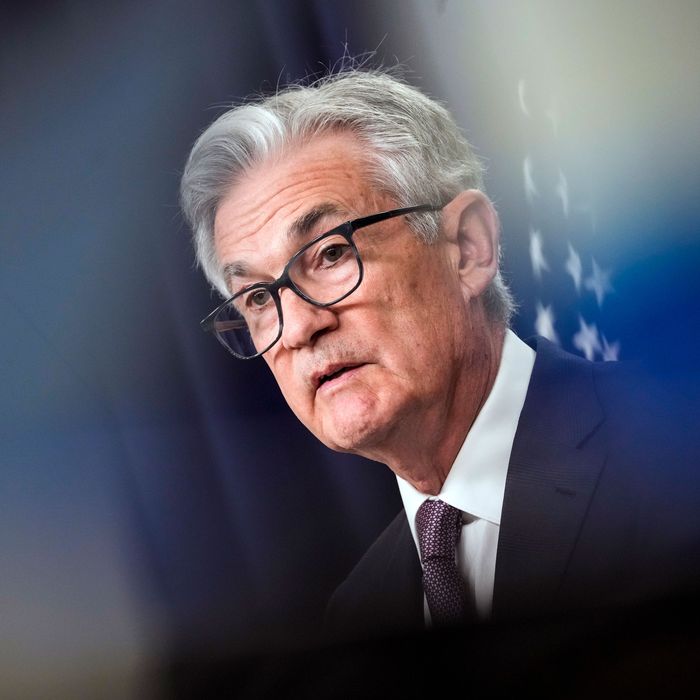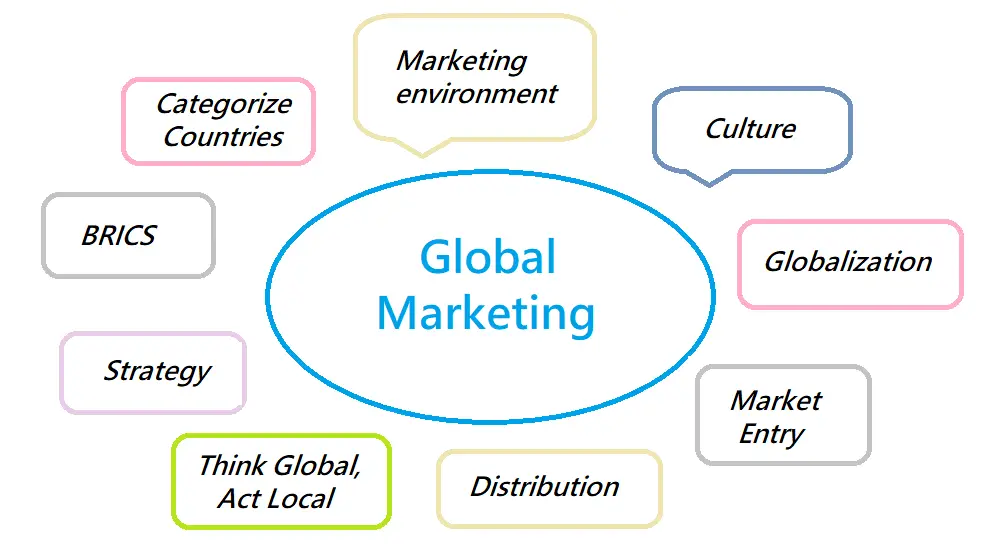

Picture: Drew Angerer/Getty Photographs
After to begin with pushing aside the specter of continual inflation, the Federal Reserve is now totally dedicated to bringing it underneath keep an eye on with a sequence of interest-rate hikes. However some concern that the central financial institution is overcompensating for its errors by means of doing useless harm to the wider financial system. I spoke with Ryan Candy, a senior director of monetary analysis at Moody’s Analytics, about whether or not Jerome Powell is making the best transfer, the danger of stagflation, and what a U.S. recession would appear to be in comparison to earlier ones.
A couple of weeks in the past, it gave the impression there was once some optimism that the U.S. may get away the present generation of top inflation with out the edge of top unemployment and a full-scale conventional recession. Since then, the marketplace has plummeted and the total outlook seems gloomier. Why?
I feel the cause, no less than to begin with, was once the Core Client Worth Index, which got here in just a little bit warmer than what other people had been expecting. One of the crucial stickier elements of inflation are choosing up. Refuge, for instance — safe haven inflation hasn’t peaked but, in order that’s going to be a continual factor. We wanted a large number of items disinflation, in particular in new and used cars, to offset probably the most products and services inflation, and we didn’t get that.
And monetary-market stipulations have tightened noticeably for the reason that Fed’s September assembly. Studying between the strains, the Fed is laser-focused on taming inflation, and so they’ll abdomen a recession to do it. And that’s necessarily what they’re forecasting: They’re predicting a upward push within the unemployment charge, which usually best happens in a recession. They’re going to damage inflation or they’re going to damage the financial system. And I feel the dangers are emerging that we don’t have a “comfortable touchdown,” the place inflation is going backtrack to the objective charge and we skirt a recession.
For a very long time ultimate yr and early this yr, the Fed took a laissez-faire option to inflation, considering, as many analysts did, that it might be slightly transitory. Clearly that was once wrong, and Fed Chair Jerome Powell admitted his mistake. To what extent do you assume his laser focal point now’s the proper path, in line with what’s taking place within the financial system, and to what extent is it pushed extra by means of a wish to now not get this incorrect a 2nd time? Is it imaginable that the Fed is in truth overreacting right here?
I feel the danger is that they’re overreacting. What they need to do is have GDP enlargement neatly beneath attainable, carry down activity enlargement, and take some power off wages, which by means of extension cools inflation. However that’s for demand-side inflation. And maximum of our inflation issues are at the delivery facet. It’s upper power costs on account of Russia’s invasion of Ukraine; it’s supply-chain pressure, which has pushed up costs of recent and used cars and youngsters’s attire, for instance. Now not all our inflation problems may also be solved by means of the Fed elevating rates of interest. Emerging rates of interest will cool the call for facet of the financial system. We’re already seeing proof that the interest-rate-sensitive portions of the financial system, together with housing, are weakening.
However except the Fed begins going out and drilling wells or riding container ships, they’re now not going with the intention to impact the availability facet, the place we’re seeing a large number of inflation. And it sort of feels like they roughly panicked after they raised charges by means of 75 foundation issues simply when it gave the look of inflation will have peaked. In case you take a look at world transport charges, they’re coming down, and oil costs have come down. That is going to assist through the years — it’s now not going to be subsequent month or within the subsequent two months, however going ahead we’re going to peer much less inflationary pressures.
However haven’t we been listening to that very same line — that we’re about to begin seeing much less inflationary power — for a yr now?
I feel economists had been beginning to sound like Chicago Cubs enthusiasts prior to they received The Global Sequence: “Simply wait until subsequent yr.” However there are causes economists are making those forecasts. World transport charges for container visitors costs had been proceeding to upward push, however now they’ve obviously rolled over. Now you’ll be able to see it in oil, you notice it in lumber, you’re seeing it in copper — it’s broad-based.
To what extent can the Biden management cool the supply-side pressures you discussed?
I feel probably the most steps they’ve taken, like freeing some oil from the strategic petroleum reserve, have helped just a little bit at the margin. Their local weather insurance policies push in opposition to them opening up or including extra rentals for natural-gas and oil manufacturing. The Biden management has were given to watch out as a result of how we get right into a stagflation state of affairs — the place you’ve gotten top inflation and top unemployment — is with coverage errors. And you’ll be able to return and take a look at the past due Seventies and early Eighties, once we had coverage mistakes on each the financial coverage entrance and the fiscal coverage entrance. As an example, any chatter of value controls will have to be shot down straight away — they don’t paintings. However the odds of stagflation within the U.S. are beautiful low, 10 or 15 p.c.
Now not that low! That turns out uncomfortably top.
For point of view, in any yr the percentages of a recession are in most cases round 10 to fifteen p.c. So the stagflation chance isn’t 0, nevertheless it’s now not 50-50, which is much more likely the percentages in, say, Europe or the U.Ok.
It doesn’t look like any nation is doing terrifically on this regard. Europe is in the middle of a deep power disaster, and Germany and the U.Ok., which simply instituted an oddly timed tax lower, glance headed towards recession. China’s COVID 0 coverage is a multitude for the financial system. The U.S. has been a relative vibrant spot up to now. The expression is going that after The us sneezes, the sector catches a chilly. However now it sort of feels like the other could be taking place.
I’ve at all times heard that expression — “the cleanest blouse within the grimy laundry.” Our financial system is conserving up slightly neatly, in particular when in comparison to probably the most different advanced economies on the earth. This may well be doubtlessly the primary recession — and our baseline forecast isn’t for recession within the U.S., nevertheless it’s going to be shut for the reason that odds are uncomfortably top — however this may well be the primary recession in fresh reminiscence that the U.S. didn’t pull the remainder of the sector in. It’s vice versa. The arena may pull us right into a recession, as a result of we’re now not going with the intention to skirt the uncomfortable side effects of Germany falling right into a recession, or the U.Ok., or the wider Euro zone. And when the financial system is prone like we’re nowadays, the rest that is going incorrect may well be the variation between flirting with a recession and falling into one.
How would that paintings? Let’s say Germany does tip into recession. How would the ones uncomfortable side effects harm the U.S.?
One can be via business. Call for for our exports would decline, and that will negatively impact production within the U.S. At the moment, should you take a look at the financial system, housing is suffering, and the worst isn’t anyplace shut at the back of us — it’s going to proceed to weaken. Throw production on most sensible of it, and now the dominoes begin to fall. However once more, as the patron is going, so is going too the U.S. financial system. They’re an important if we’re going to hold in there. This is going again to the hard work marketplace and so long as activity enlargement is forged, the unemployment charge doesn’t upward push an excessive amount of, we may well be ok. However the fear is if increasingly more international locations fall right into a recession, production begins shedding employees, and layoffs in development begin to build up. And that might begin to actually take a toll at the hard work marketplace. After which as soon as unemployment is going up, there’s a mental impact the place should you see your mates, circle of relatives, neighbors getting laid off, then you definitely run for the bunker, you pull again on spending since you’re frightened about your personal activity safety. And that’s how this adverse reinforcement cycle begins to kick in.
For probably the most phase, I watch what customers and companies do, now not what they are saying. They are able to say, “Oh, I’m actually down within the dumps.” And you’ll be able to see that during other measures of shopper self assurance presently. However they’re in the market nonetheless spending, as a result of we now have a low unemployment charge. Nominal salary enlargement is beautiful sturdy from what we noticed pre-pandemic — there’s two and a part trillion greenbacks in extra financial savings. So customers are nonetheless spending, even if their self assurance would counsel differently.
I interviewed Larry Summers some time in the past, and he predicted that there was once no manner of having out of the placement with out hitting 6 p.c unemployment. What sectors of the financial system can be toughest hit in the case of layoffs in that state of affairs?
With a 6 p.c unemployment charge, I’d suppose that the Feds were given rates of interest upper than we’re assuming within the baseline. You’d have layoffs in housing, you’d have layoffs in production. The shopper sector can be hit exhausting as neatly, as a result of when unemployment is going up, other people scale back on spending. They’re now not going to move out to eating places and bars or spend time on recreational commute.
For the reason that inflation is coming down for your view, would a downturn be at the milder facet? Since the Fed may see that unemployment is emerging and inflation is falling, and so they may pump the brakes in this coverage quicker reasonably than later.
If we do have a recession — and optimistically we don’t and the Fed is in a position to pull this rabbit out in their hat — it might be a gentle one. As a result of what most often determines the severity and the period of a recession is the catalyst. So what’s the explanation we fall right into a recession? The pandemic, for instance, or a monetary disaster, or a housing bubble. The ones resulted in lengthy or deep recessions within the pandemic’s case.
However there’s no obvious imbalance within the financial system nowadays. Family stability sheets are in actually excellent form. Nonfinancial company balances don’t seem to be in as excellent form as families, however they’re nonetheless beautiful forged. State and native governments are flush with money. The one stability sheet within the financial system that has an issue is the government, and that’s now not a topic for a recession or a deep downturn. So if we do have a recession, it will have to be delicate, for the reason that Fed will say, “All proper, we overdid it, we will backtrack and get started slicing rates of interest” and that are supposed to assist restrict the severity and the period of it.
This interview has been edited for duration and readability.
Supply By way of https://nymag.com/intelligencer/2022/09/is-the-feds-cure-for-inflation-worse-than-the-disease.html





